Frank B. John Elementary
Introduction
Text-to-speech Audio
Images
Ellis Street Graded School which became Frank B. John in 1928.
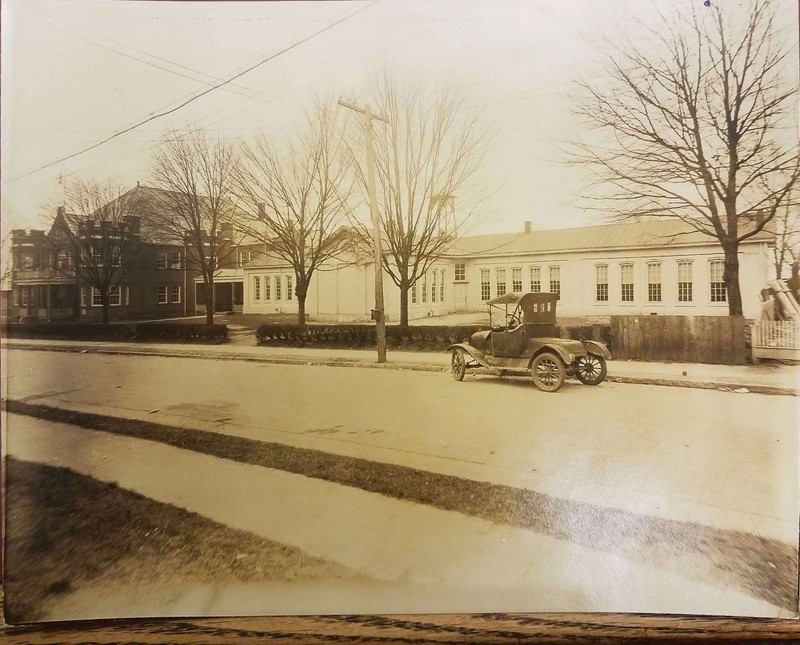
Announcement of the integration of Frank B. John Elementary in the Salisbury Post on August 29, 1962.
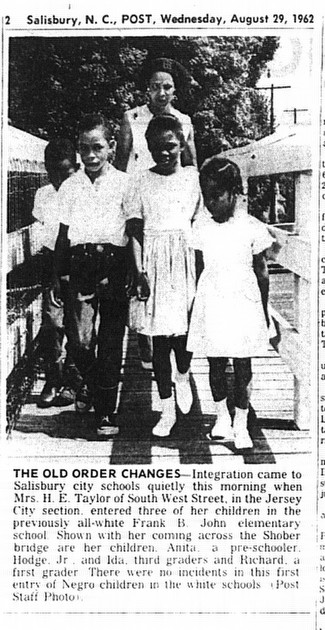
Frank B. John, on the left, with an unidentified man.
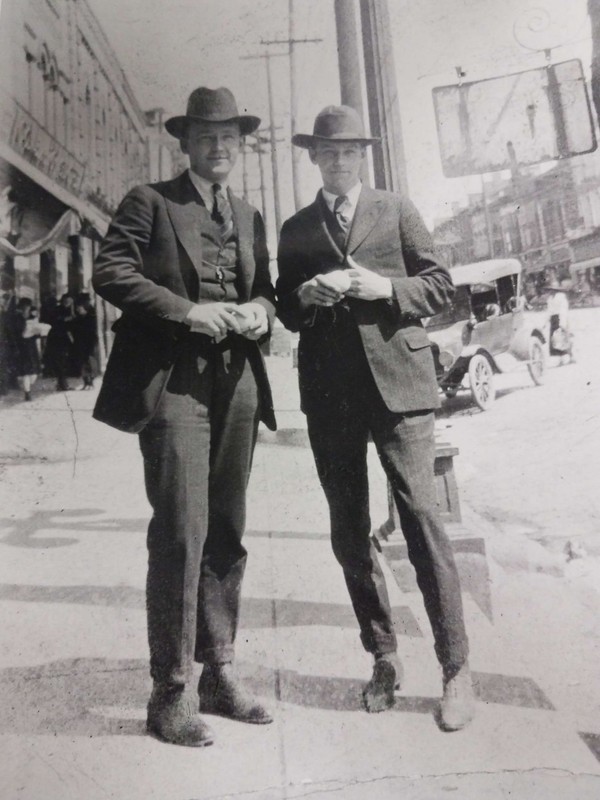
Salisbury Post announced the decision in the historic court case of Brown v. Board of Education of Topeka on May 17, 1954
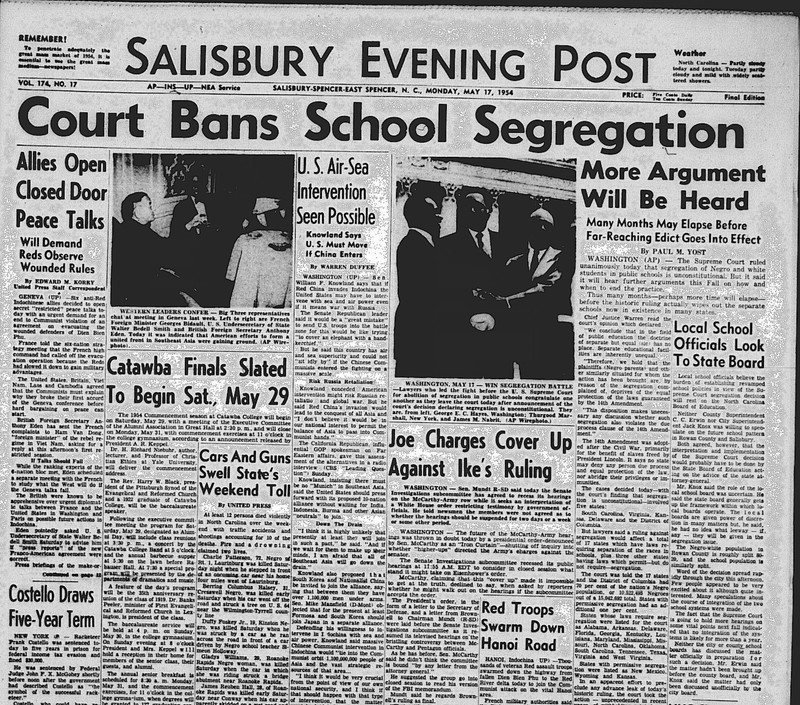
The Frank B. John P.T.A. calls a special meeting to discuss the Pearsall Plan on September 5, 1956.
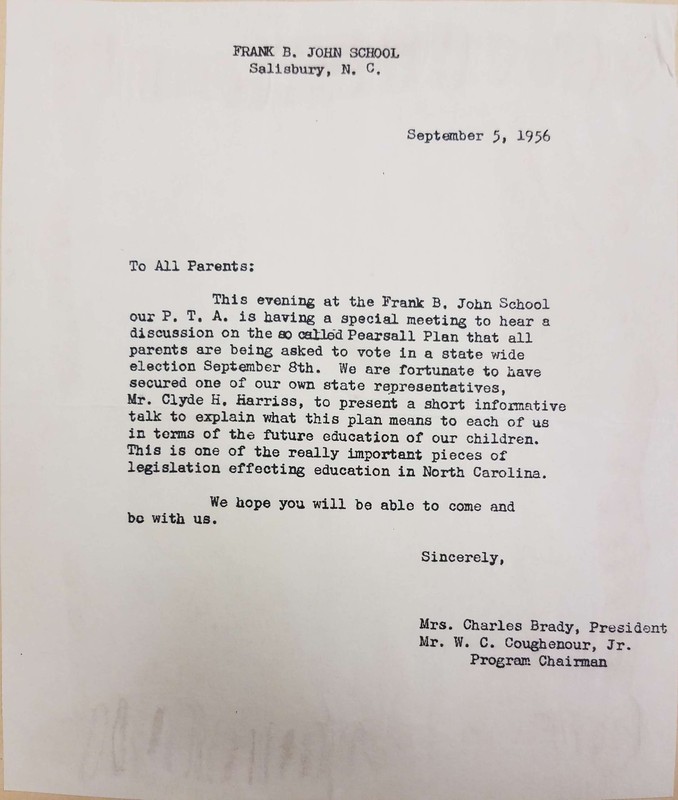
Backstory and Context
Text-to-speech Audio
On May 17, 1954, the United States Supreme Court ruled against racial segregation in public schools. The historic decision of Brown v. the Board of Education of Topeka started the desegregation of schools in the United States. In the decision's aftermath, the local school officials turned to the state board for direction. North Carolina, like other Southern states, hoped to pass legislation to resist the verdict. Governor Luther H. Hodges and the North Carolina General Assembly sent the Pearsall Plan for a vote on September 8, 1956. The legislative package in 1956 excused students from attendance requirements if assigned to an integrated school and allowed local school districts to close public schools if under pressure to integrate. A few days before the vote, the P.T.A of Frank B. John Elementary called a special meeting to discuss the Pearsall Plan and hear from a state representative, Clyde H. Harriss.[1]
In 1954, an interracial committee created a plan to peacefully desegregate Salisbury schools following Brown v. the Board of Education of Topeka. The committee agreed to begin integration with a first-grade class and expand the operation as each school rejected each set of first graders. Tucked in the top left corner of the second page, the Salisbury Post quietly announced the integration of Frank B. John elementary school on August 29, 1962. Mrs. H. E. Taylor registered her three children at Frank B. John elementary with no resistance or disturbance from the White community. Anita Taylor, Hodge Jr. Taylor, and Ida Taylor became the first African-American children to attend a formerly all-White school in Salisbury. The early and calm integration of Frank B. John stood in contrast to the upheaval and violence in South Rowan.[2]
By 1965, Charles C. Edwin resigned from his position as the superintendent of Rowan County Schools. Edwin did not agree with the desegregation, a feeling shared by several White citizens in the community. Jesse C. Carson Jr. replaced Charles Edwin that year. Unlike his predecessor, Jesse Carson intended to comply with the delivered court decision. In a speech on May 23, 1965, Carson stated that he planned “for a smooth implementation of the plan to comply with the Civil Rights Act.” The board prepared a plan for integration and submitted it in July 1965. Tensions in the South Rowan came to a head in 1967 as the county scrambled to comply with the U.S. Department of Health, Education, and Welfare recommendations. Crosses burned across South Rowan and school property vandalized.[3]
The city demolished the Frank B. John Elementary school in 1966 and replaced the school with the newly built Carroll T. Overton School. There are sections of the original school that still stand and currently house the office of the Rowan Salisbury Board of Education.
Sources
[1] Memo to Parents, Frank B. John Elementary. 5 September 1956. Rowan Salisbury Schools Collection. Rowan County Public Library, Edith Clark History Room.
[2] “The Older Changes.” Salisbury Post. 29 August 1962. Rowan County Public Library, Edith Clark Reading Room.
[3] Melvin K. Morgan, “Political Winds that Shaped Rowan County School,” 1971, Rowan County Public Library, Edith Clark Reading Room.
Rowan Salisbury Schools Collection. Rowan County Public Library, Edith Clark Reading Room.
Rowan County Public Library, Edith Clark Reading Room.
Rowan Salisbury Schools Collection. Rowan County Public Library, Edith Clark Reading Room.
Rowan County Public Library, Edith Clark Reading Room.
Rowan Salisbury Schools Collection. Rowan County Public Library, Edith Clark Reading Room.
